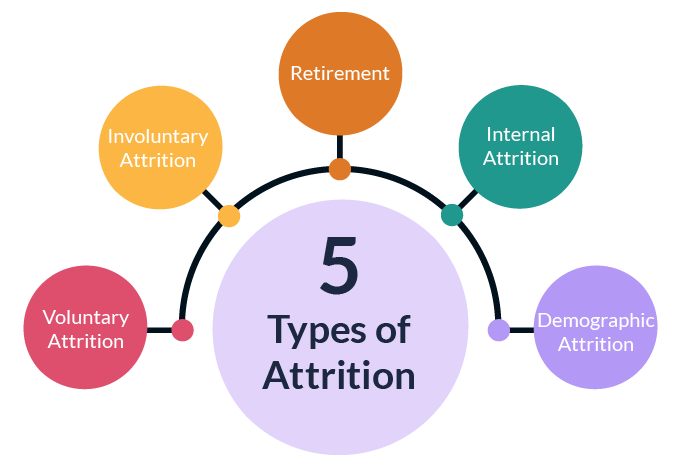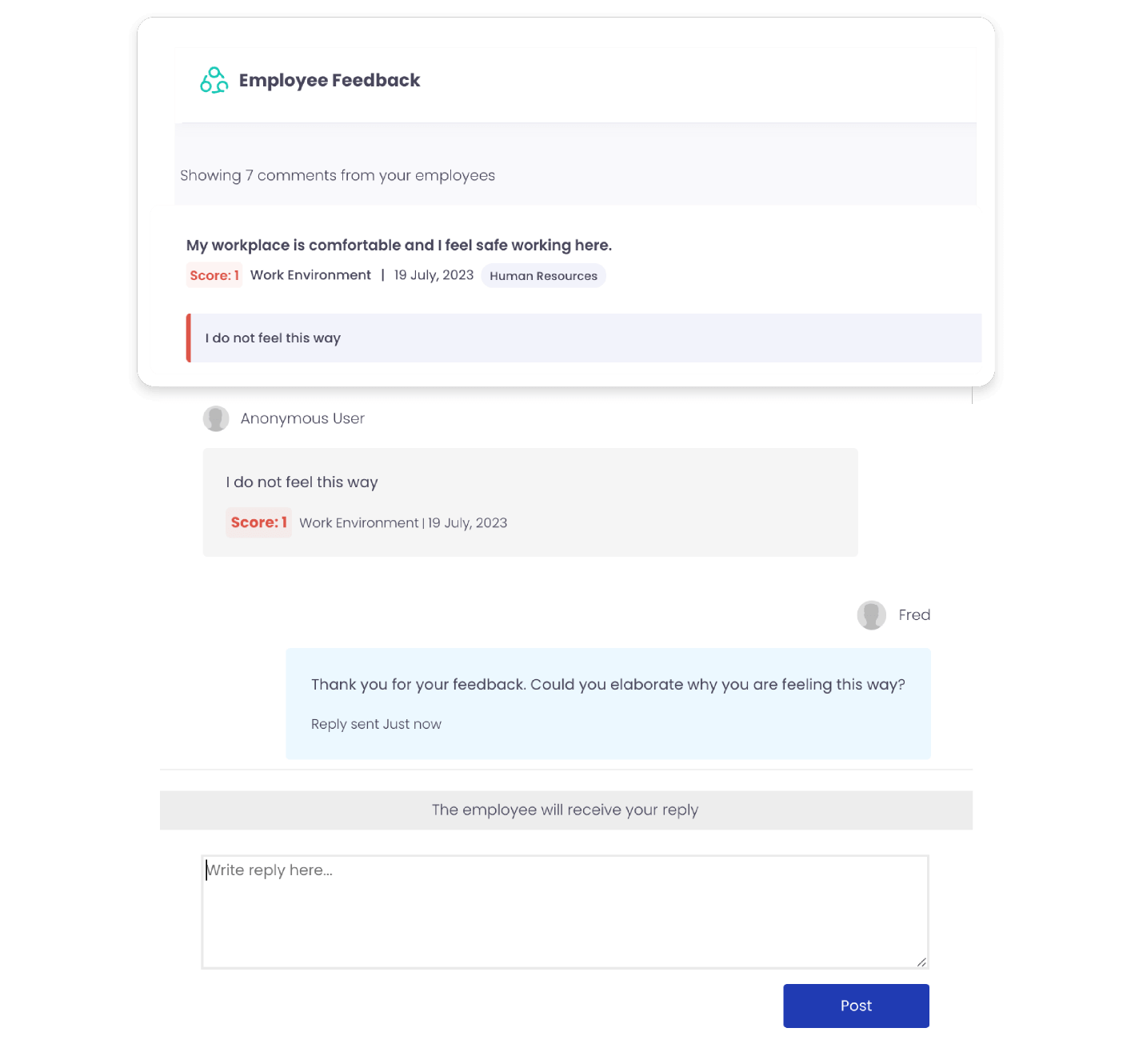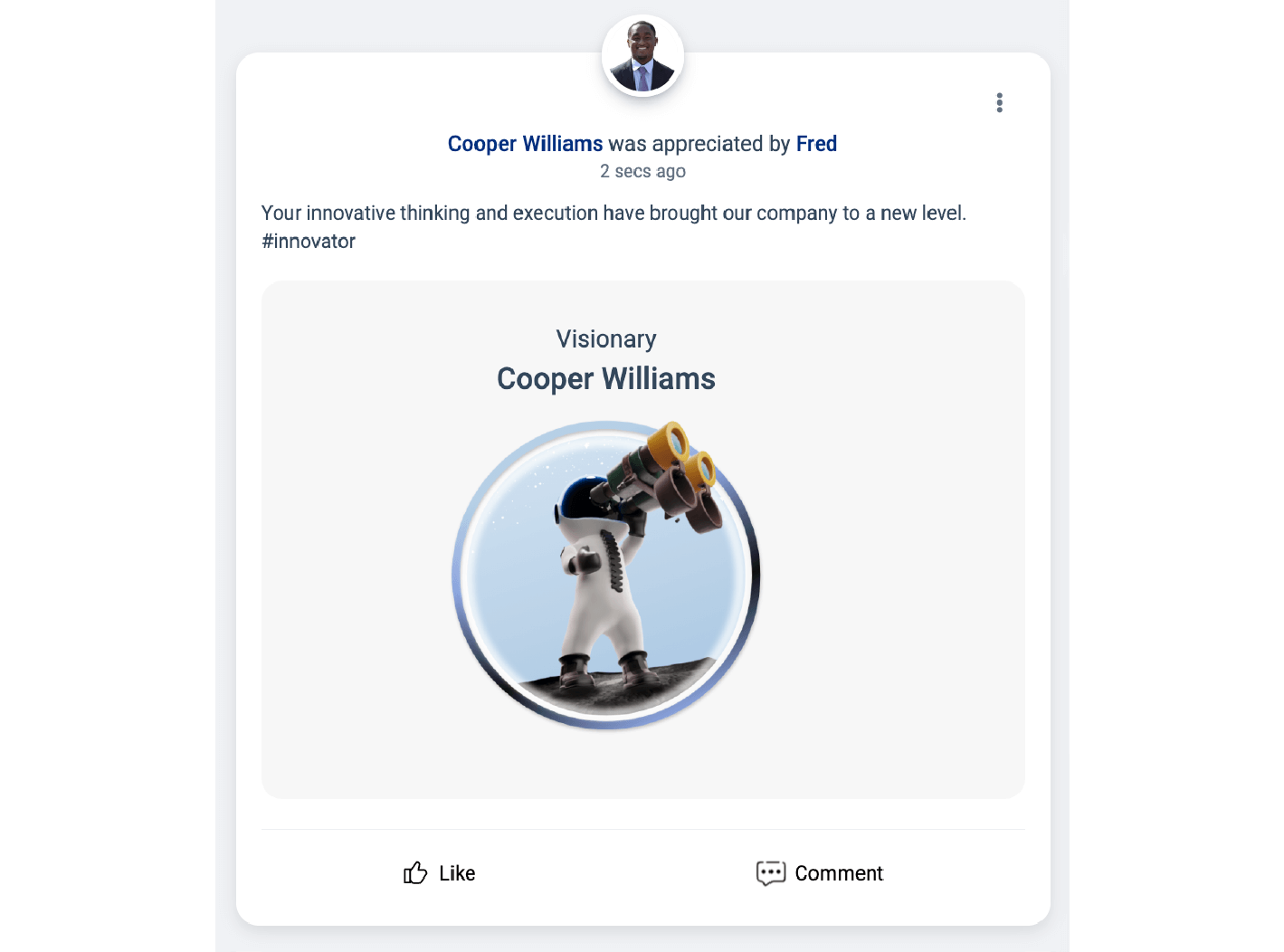Employee Attrition: Meaning, Types, Reason, and Tips to Improve
Employee attrition is a phenomenon that has existed for a long time in the ever-evolving landscape of the modern workplace. However, it is on the rise in recent times.
It has become a topic of concern that every HR professional and leader can resonate with.
Given the power it possesses in reshaping careers and organizations, it is essential on our part to dive into its intricacies by understanding its roots.
Let's delve in and explore the secrets to a thriving and resilient workforce.
Key Takeaways
- What is Employee Attrition?
- How to Calculate Employee Attrition?
- Learning about the Types of Employee Attrition
- Effective Strategies to Reduce Employee Attrition
What is Employee Attrition?
A study by Employee Benefits News on employee retention found that the average cost of losing an employee is a staggering 33% of their annual salary.
Employee attrition is the process where a workforce witnesses a gradual reduction in its workforce size. Over a period of time employees' depart from the organization due to various factors. This departure can either be voluntary or involuntary.
This comprises a natural part of the employment lifecycle where employees join and leave for several reasons. Managing and understanding attrition is pivotal for organizations to ensure a stable and engaged workforce.
Calculating Employee Attrition Rate: The Formula
If you're trying to determine your company's attrition rate, this section will guide you in calculating your organization’s attrition rate using an easy-to-understand method.
The computation is straightforward and detailed below for everyone's benefit.
Suppose in a particular month, 50 new employees join, and subsequently, 30 employees leave the company. The attrition rate would be:
This is a very high attrition rate. Ideally, your attrition rate should be less than 10%.
Attrition can also be referred to as the loss of customers or clients due to limited product or service scope and is not replaced by the subsequent generation.
This is usually referred to as customer attrition. Customer attrition can hurt an organization's revenue generation as you lose a loyal customer base.
5 Types of Attrition

1. Voluntary Attrition
The most common type involves the voluntary attrition. Here the employees willingly leave their organization by resigning or quitting their job. It is under the control of employees. There are several reasons associated with this decision of theirs.
Some of them are as follows:
- Lack of Opportunities for learning and Growth
- Better Pay opportunities in a different organization
- Mismatch of job role and skill of the employee
- Limited Growth opportunity
- Lack of appreciation
- Stress for an extended period
2. Involuntary Attrition
This type of attrition occurs when employees are separated from their organization against their wishes. Their consent is not taken into account, and the decision is levied on them. Factors such as terminations, lay-offs, and restructuring that lead to the decision are beyond employees' control.
Involuntary attrition is initiated by the decisions made by the management or the external circumstances that influence the decision.
Performance issues, financial constraints, or transitions in organizational strategies are the reasons behind such attrition.
3. Retirement
This type of attrition occurs when employees end their working tenure after reaching a desired age. This attrition is related to an employee’s personal decision and the work protocol based on age, health, and financial readiness.
Organizations need to make plans to address retirement attrition by offering retirement benefits. Also, identifying retiring employees beforehand is crucial to fill the vacancies left behind by retired employees.
4. Internal Attrition
In this type of attrition, employees decide to transition to a newer position by leaving their current position but remaining in the same organization. There might also be a complete shift to a different role and department.
In some cases, this attrition can be regarded as desirable because employees can find their choice of department where they can flourish.
Some of the reasons behind this move could be to seek career development opportunities and restructuring within the organization.
5. Demographic Attrition
In this type of attrition, a specific demographic of employees leave the organization at higher rates compared to other groups. The demographic could include a certain age group, ethnicity, or gender.
It generally results from differences that stem from workplace experiences, opportunities, and career goals among various demographic groups.
Organizations ought to be aware of these patterns, promote diversity and inclusion, and address underlying issues to reduce attrition among specific demographics.
The Financial Impact of Attrition
Employee Attrition costs U.S. companies an estimated $1 trillion annually (Source: Gallup)
Employee turnover or attrition can have a significant financial impact on companies across all industries. When employees leave, it leads to direct costs like recruitment, hiring, and training of new employees. There are also indirect costs from loss of productivity and institutional knowledge.
According to some estimates, it costs on average one-third of an employee's annual salary to replace them.
Let’s look at the financial impact of attrition on different industries:
1. Retail Industry
With complex store operations and intense customer interactions, retail employees have always been vulnerable to burnout.
According to a report, over 55% of store staff leave within a year! Replacing just a single $10 per hour cashier can cost $4,700 or more in hiring and training.
Now imagine the losses facing massive chains like Walmart which employ over 1 million associates. Just a 5% higher turnover could set them back by $600 million-plus annually!
2. Healthcare Sector
Nursing shortages have reached crisis levels in hospitals worldwide.
Over 20% of nurses now change jobs each year due to extreme pressures. As per research, each percentage point rise in nurse turnover costs an average hospital over $300,000.
For a large 2000-bed healthcare system, 6% higher attrition could inflate nursing department expenses by $3.6 million every year in avoidable replacement costs. This strains budgets that could have funded the latest medical equipment or beds.
3. Food Services Industry
The restaurant sector is extremely labor intensive with over 73% turnover rates for hourly workers as per the Bureau of Labor Statistics.
Considering doomed profit margins (3-5% on average), employee rehiring and lost productivity costs of $2,100 per staff member could severely diminish profitability.
Established chains can mitigated this somewhat via training programs but the impact on standalone outlets is often crushing.
4. Technology Sector
Few business losses are as impactful as technology companies hemorrhaging top engineering talent.
Statistics indicate over 15% developers, software engineers exit jobs within a year, costing Silicon Valley collectively over $800 million in avoidable turnover costs.
Factoring knowledge drain and delays in product cycles, the total loss for the tech sector exceeds $1 billion annually.
Reasons for Employee Attrition
1. Toxic Workplace Culture
One of the key drivers of employee attrition is workplace culture. A toxic work environment can lead to high levels of stress and dissatisfaction among employees.
Factors such as poor communication, lack of transparency, and micromanaging can all contribute to a negative workplace culture.
2. Lack of Diversity and Inclusion
Another factor that can impact employee attrition is the organization's approach to diversity and inclusion.
When employees from underrepresented groups feel excluded, they may experience feelings of isolation and alienation. This often leads to them seeking a more inclusive workplace elsewhere.
Moreover, a lack of diversity and inclusion can lead to a homogeneous work environment where diverse perspectives and ideas are limited. This can stifle innovation and creativity, which might hinder organizational performance and growth in the long run.
3. Poor Management
Perhaps one of the biggest contributors to attrition is poor leadership and management. Employees don't quit their jobs, they quit bosses and work cultures.
Poor management practices, such as micromanagement, lack of feedback, and failure to recognize achievements, create a negative work environment.
4. Lack of Recognition and Appreciation
Studies show that 79% of people who quit their jobs cite “lack of appreciation” as their reason for leaving.
Employees who feel that their contributions are not recognized or appreciated by their organization are more likely to become disengaged.
For instance, imagine an employee who consistently goes above and beyond in their work but never receives any recognition or praise. Over time, this lack of acknowledgment can lead to feeling of resentment contributing to the employee's decision to leave.
5. Job Insecurity
Uncertainty about job stability, such as rumors of layoffs or frequent restructuring, can create anxiety and stress among employees.
Imagine a company that is experiencing financial difficulties and is forced to downsize its workforce. This uncertainty can create a sense of instability and prompt employees to start looking for more stable employment opportunities elsewhere.
Furthermore, when employees are worried about their jobs, it can be difficult for them to focus on their work. It can lead to decreased productivity, lower job satisfaction, and ultimately, higher turnover rates.
A Global Perspective: Navigating Attrition Across Borders
Managing attrition becomes more complex when overseeing a globalized workforce across multiple regions and cultures. What keeps employees happy in one country might not work in another.
As a leader, it is critical to understand and adapt to the diverse expectations and values of your international teams.
Additionally, cultural differences significantly impact employee expectations and retention strategies. Employees from diverse cultural backgrounds have varying needs and preferences.
For instance, in western societies, people value personal growth and pay linked to performance. But in many Asian societies, people prioritize a supportive work environment and job security. Therefore, it is important for companies to understand these differences to keep their employees happy and motivated.
Here are few approaches that you can follow to effectively navigate attrition across borders:
1. Research and Understand
Spend time understanding the dominant cultural values and workplace norms in every country where you have employees. This will help you adapt your approach accordingly.
For instance, you have a business meeting in Japan. Understand and research Japanese cultural norms and business etiquette. For example, bowing is a common form of greeting, and punctuality is highly valued.
2. Partner with Local HR
When expanding operations, work closely with local HR leaders who understand regional expectations. Use their expertise to tailor HR practices, such as recruitment, training, and performance management, to align with local customs and laws.
3. Be Open-minded and Respectful
Approach interactions with an open mind and a willingness to learn from different perspectives. Show respect for cultural differences and avoid imposing your own cultural norms.
When working with a team from Middle East, be open to their ideas and ways of working. Show respect for their cultural practices, such as observing certain traditions.
4. Seek Feedback
Regularly survey international employees to measure engagement levels and identify unique needs. Implementing employee pulse surveys can provide valuable insights into the current state of employee engagement.
Accordingly, you can adjust your retention strategies based on the feedback received.

Source: Vantage Pulse
5. Equip Managers with Cross-Cultural Training
Provide overseas managers with training and resources to help them understand and navigate cultural differences within their teams.
Offer support in areas such as communication styles and team dynamics to help them build strong relationships with their teams. This can help improve team morale, productivity, and ultimately, retention rates.
7 Effective Strategies to Reduce Attrition
1. Professional Recruitment Strategy
A strong professional recruitment strategy is essential for reducing employee attrition. It involves more than just finding candidates with the right skills. It is all about finding individuals who align with your company's values and culture.
Start by creating detailed job descriptions that accurately reflect the role and the expectations. Also, use a variety of recruitment channels to reach a diverse pool of candidates.
Additionally, a thorough interview process is crucial. Behavioral assessments and personality tests can provide valuable insights into a candidate's compatibility with your company culture.
By investing time and effort into your recruitment process, you can ensure that you hire employees that are likely to stay long-term. This can lead to a more stable and productive workforce.
2. Enhance Onboarding Facility
A robust onboarding program goes beyond just paperwork and orientation. It can make the new hires feel welcomed, valued, and prepared for their roles within your organization.
To enhance your onboarding process, consider implementing an orientation program that includes introducing new hires to your company culture, values, and mission.
Assigning a mentor or buddy can help new employees acclimate to their new environment and feel supported from day one. Furthermore, providing clear expectations and goals can help new hires understand their role within the organization.
3. Recognizing & Rewarding Astounding Efforts
Recognizing and rewarding exceptional performance motivates employees to continue exceeding expectations. The rewards can come in various forms, such as bonuses, promotions, extra paid time off, or public recognition.
The key is to make the reward meaningful and personalized to the individual, showing that their hard work is valued and appreciated. This not only boosts morale but also creates a sense of loyalty and commitment to the organization.
Additionally, with the help of Rewards and Recognition platforms, you can create an environment where employees are appreciated and rewarded for their hard work.
By consistently rewarding outstanding efforts, you can incentivize employees to give their best. This also creates a positive work culture that values and celebrates success.

Source: Vantage Rewards
4. Encourage Work-Life Balance
According to Statistics, 89% of surveyed HR professionals saw an increase in employee retention after implementing flexible work policies.
Promoting a healthy work-life balance goes a long way toward keeping your employees energetic and satisfied at work.
As humans, we are bound to get tired and worn out due to excessive work routines. The best way to keep employees active and revitalize themselves is by giving them flexible work hours, encouraging them to take time off, and discouraging excessive overtime.
Considering and implementing these factors will save your employees from burning out and leaving your organization.
5. Do Not Skim Out on the Compensation
We know rewarding your employees with a handsome paycheck is not easy. It takes a toll on the pockets of your company.
However, it is advisable not to drop below the standard norms or the average compensation awarded by your competitors. If your competitors tend to offer them more, they will not give a second thought to transitioning.
Having a statistical model of the compensation provided by your competitors will help you keep track of current compensation and make offerings likewise. Balancing the model will see a dip in attrition and turnover rates of your company.
If there are considerable differences, you should consider re-evaluating your compensation structure.
6. Foster a Positive Work Environment
Create a positive work environment that involves fostering open communication, respect, and a supportive atmosphere. It will bring out the best in every employee.
When employees feel safe and respected, they are less likely to seek opportunities elsewhere. Try to build a safe space for employees where they can feel safe to speak up and share their thoughts.
Employees in psychologically safe environments feel comfortable taking risks and trying new things, knowing that mistakes will be seen as learning opportunities rather than failures.
7. Provide Opportunities for Professional Growth
A workplace survey report found that 94% of employees said that they would stay longer if a company invested in helping them learn.
Employees are more inclined to remain with a company that prioritizes their professional growth. Therefore, providing opportunities for learning and career advancement increases their loyalty to the company.
For instance, conduct training, workshops, and mentorship programs to enhance your employees' skills. This will lead to higher retention rates and a more satisfied workforce.
Conclusion
Employee turnover may feel inevitable, but it doesn't have to be. With careful strategy and commitment, organizations can curb attrition and retain top talent.
Since, the costs of neglecting retention are too high, financially and in business performance. As a leader, it's critical that you step up now to make employee retention a strategic priority rather than an afterthought.
With your commitment to implementing proactive retention initiatives your organization can thrive with an engaged, stable workforce for the long haul.


















